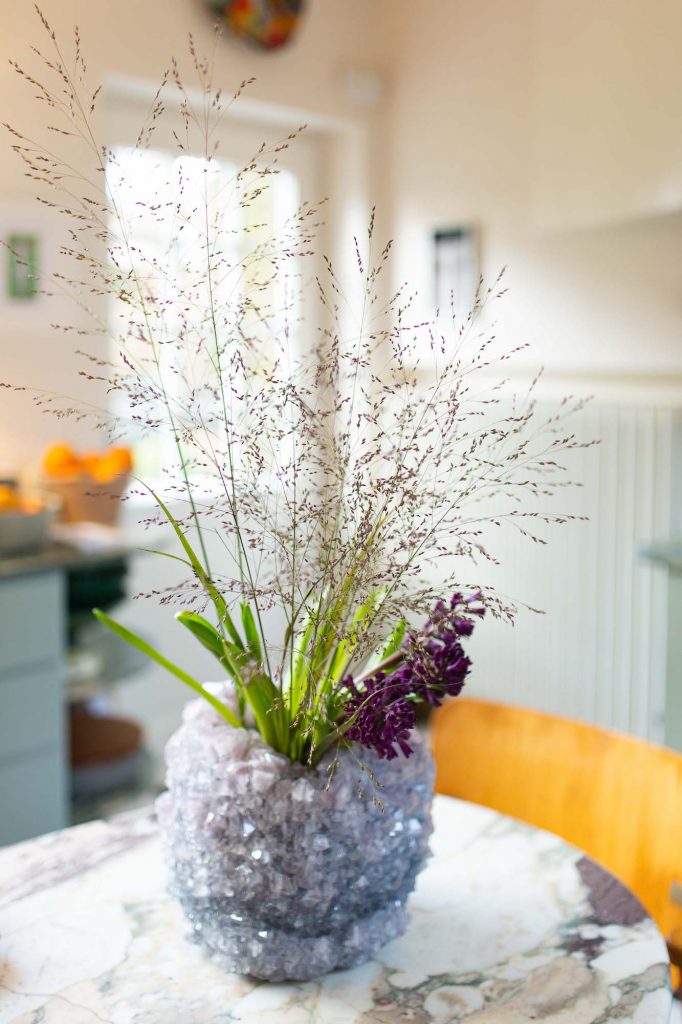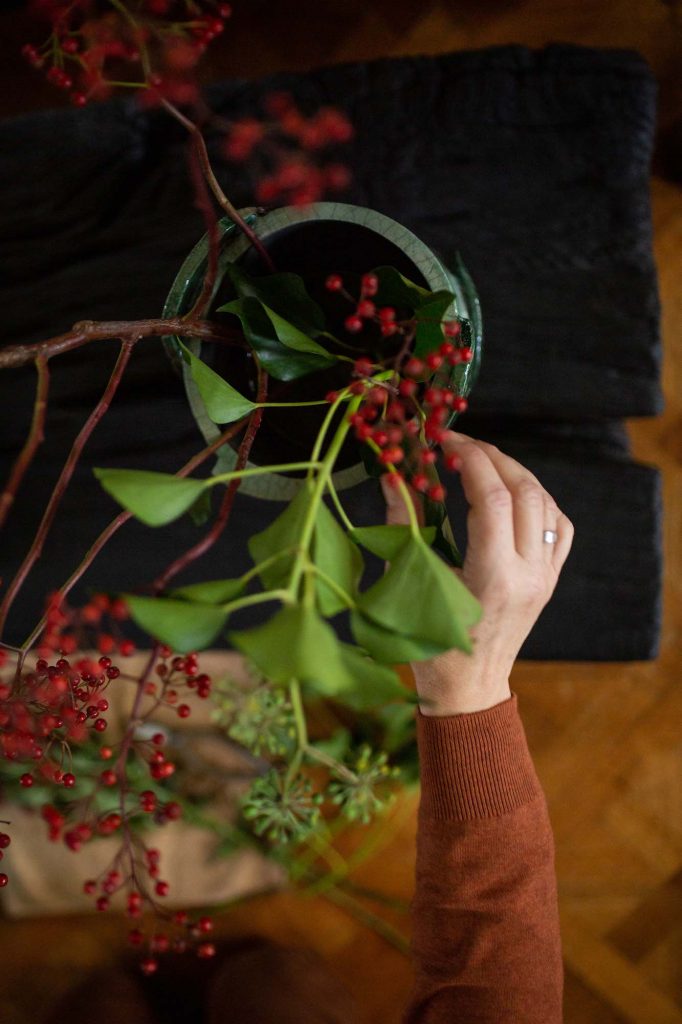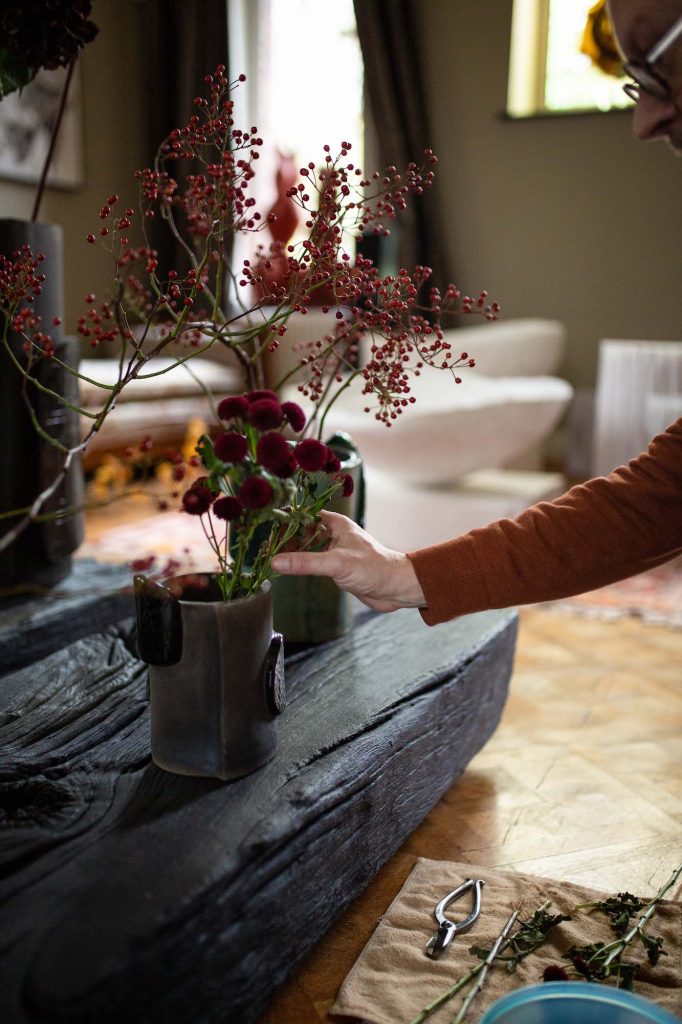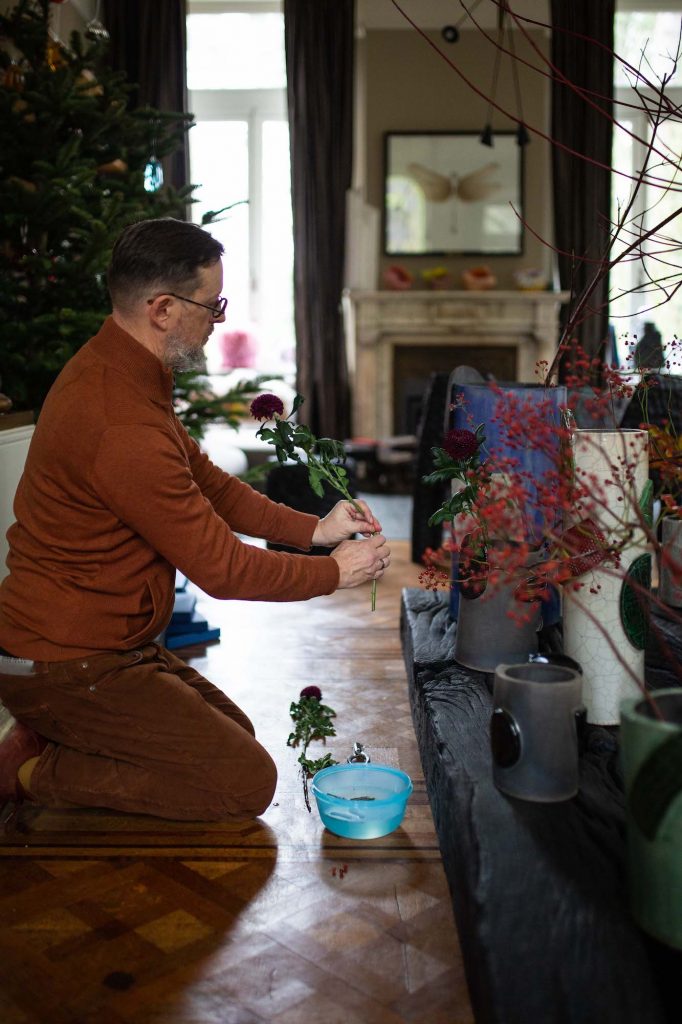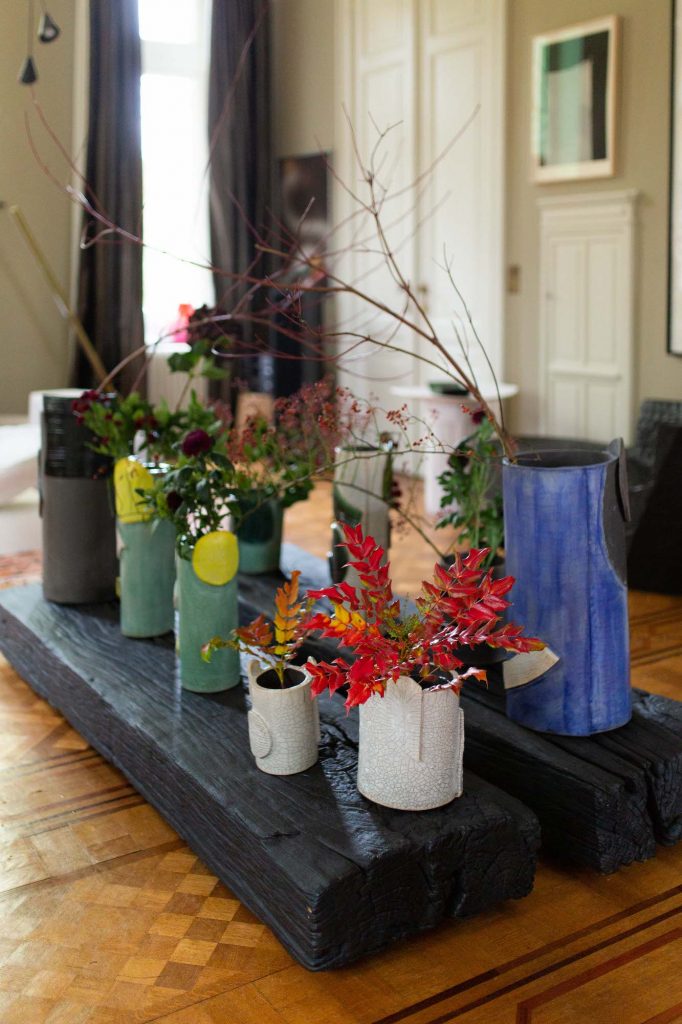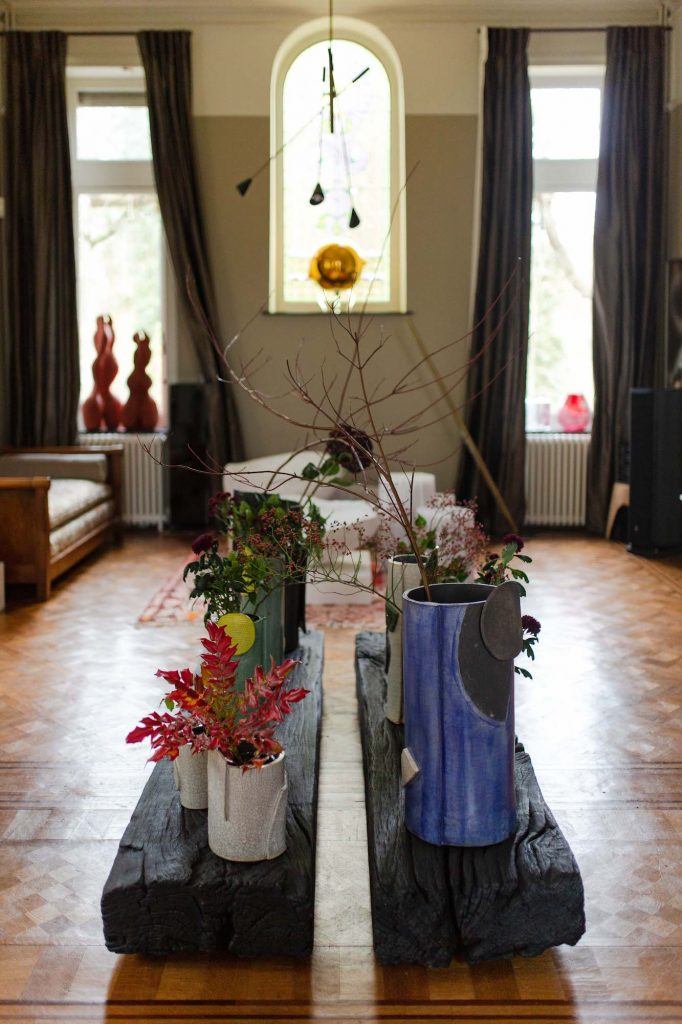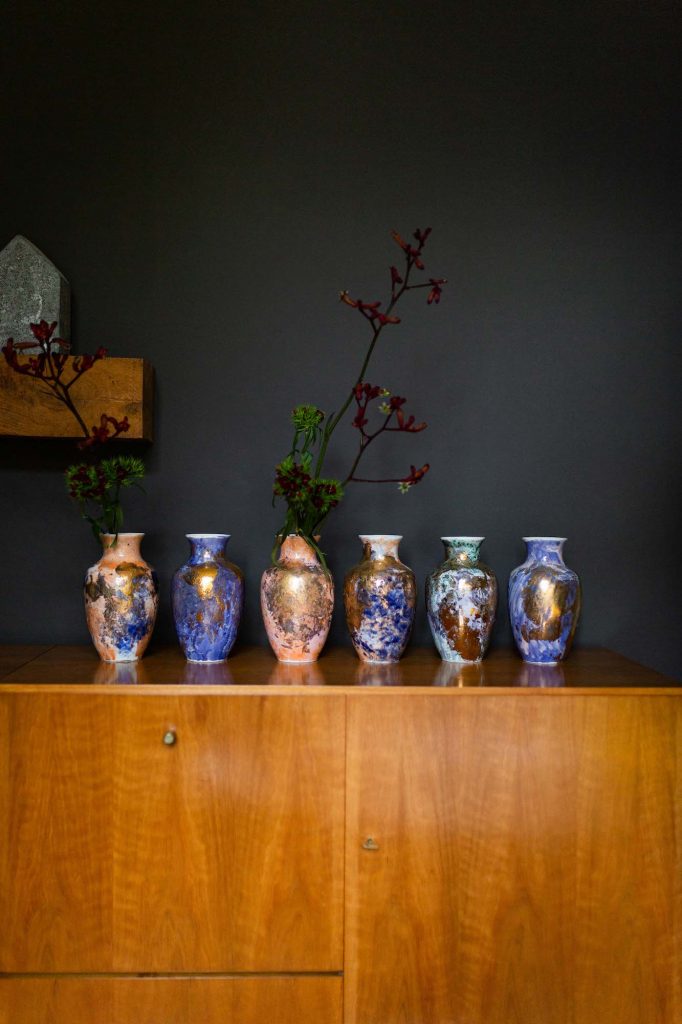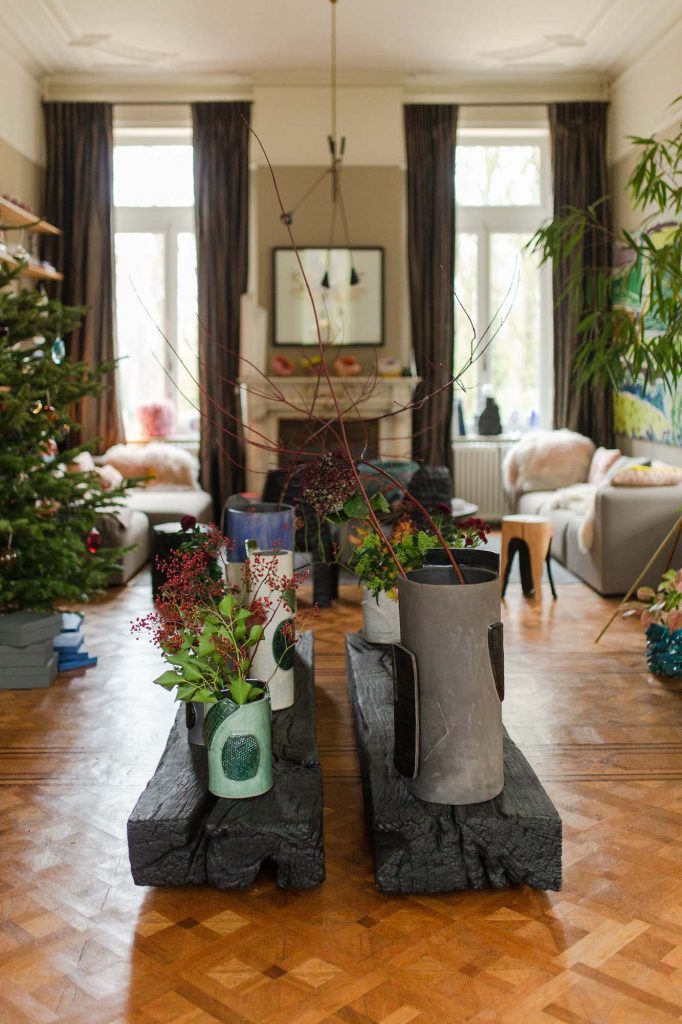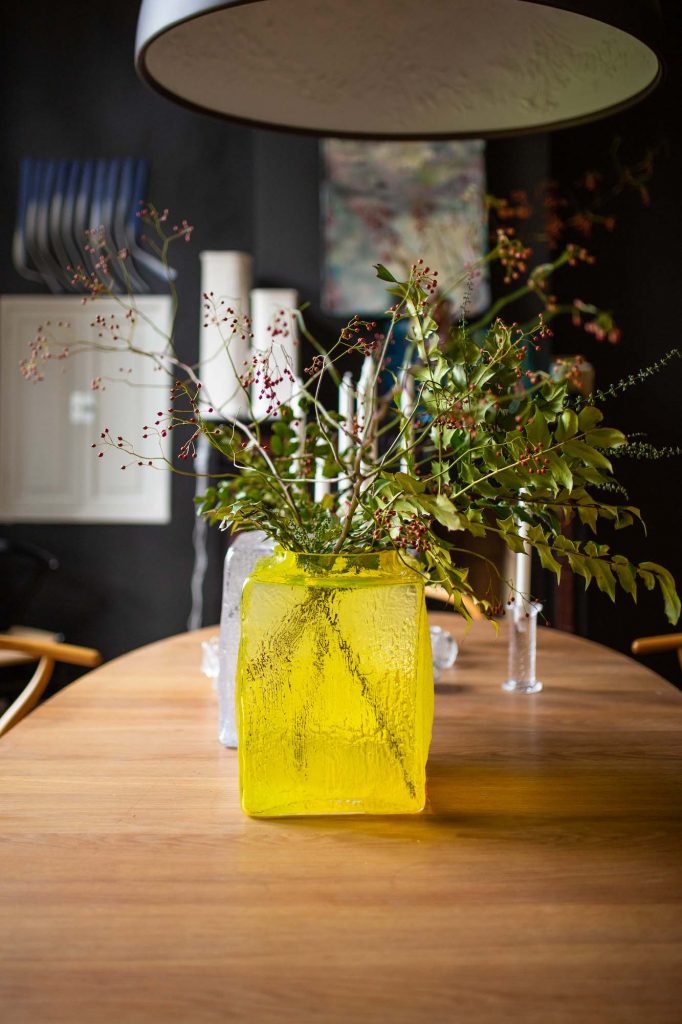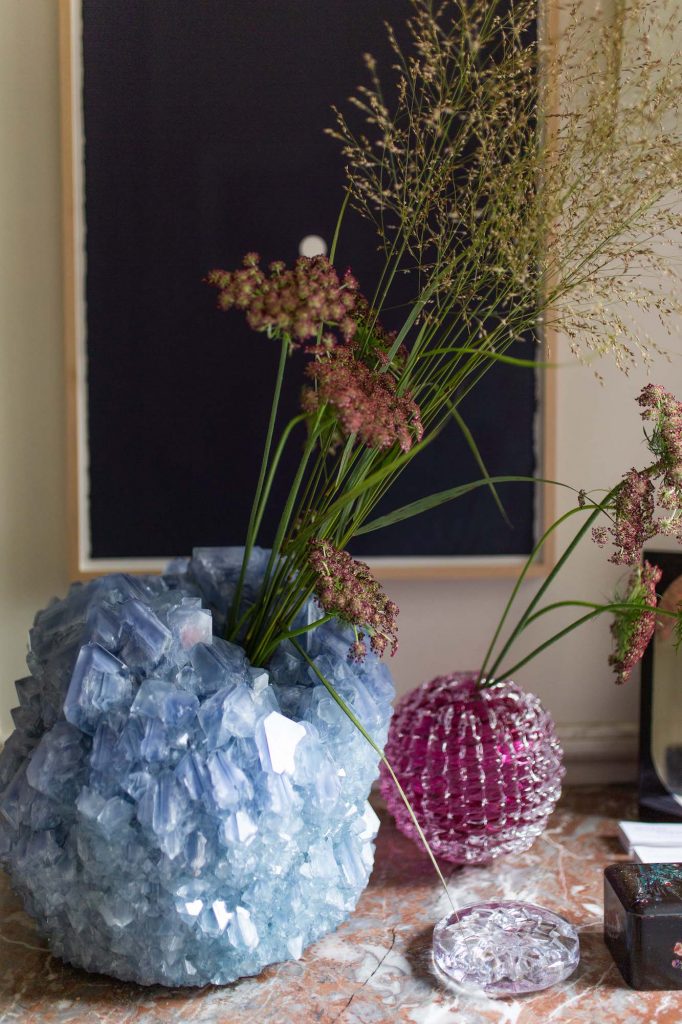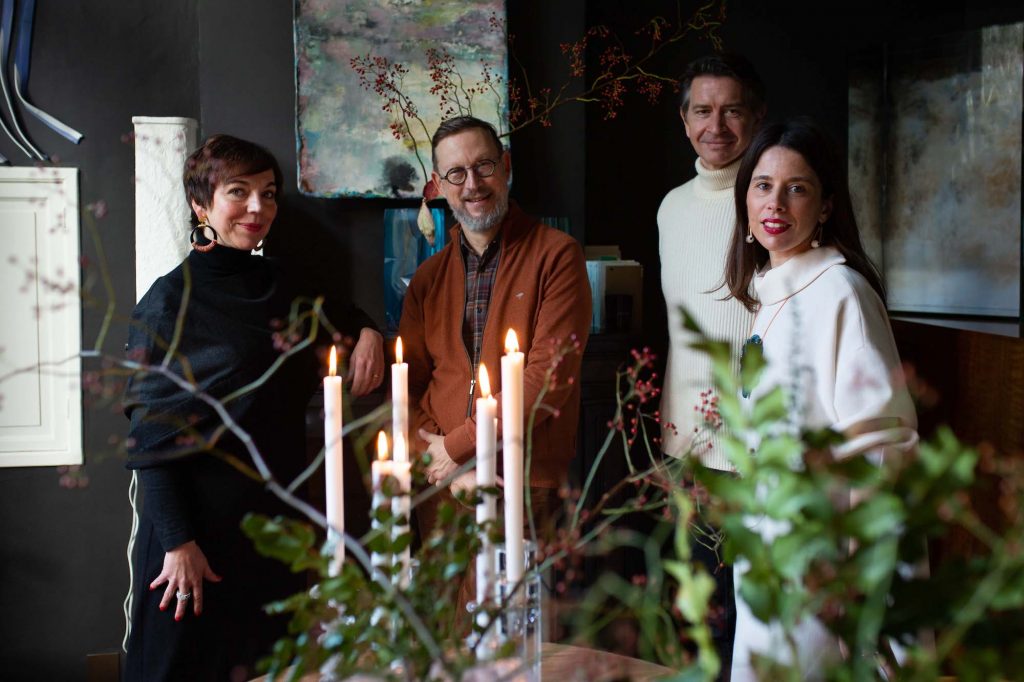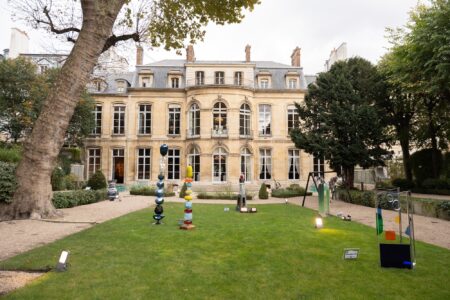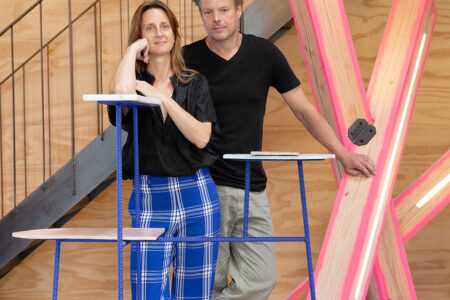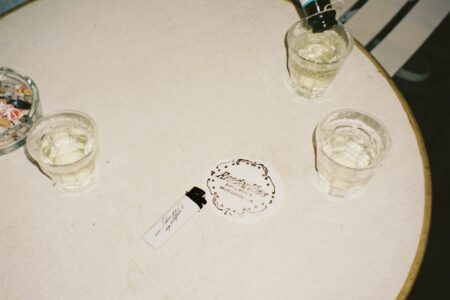Jozef Prelis Seihô: Living Ikebana
Spazio Nobile at Home invited master Ikebana artist Jozef Prelis Seihô to create a living installation of Ikebanas in a selection of vases by gallery artists and designers. The exhibition is on view through January 22nd.
On December 11th, Spazio Nobile at Home opened the exhibition, Living Ikebana, inviting master Ikebana artist Jozef Prelis Seihô to create a living installation of Ikebanas in a selection of vases made by the artists and designers of the gallery such as François Azambourg, Marie Corbin, Nathalie Dewez, Garnier & Linker, Katherine Huskie, Isaac Monté, Piet Stockmans, Kiki van Eijk, Joost van Bleiswijk & Philipp Weber. This flower art installation dialogues with collectible furniture, objects and works of art. There will be a finnisage on Sunday, January 22nd with two live performances that will celebrate the end of this unique exhibition but is also intended to coincide with the upcoming Chinese and Japanese New Year’s, and their celebration of the upcoming Spring. Here, Jozef Prelis Seihô talks about what makes this installation Ikebana and why it is Ikebana.
” Without wanting to sound provocative I could say that Ikebana is what Ikebanists do. This explains the huge variety of what we see under the name of Ikebana as practiced by the hundreds of different schools, each with their own approach. Originally there were the very formal, stylized arrangements for sacred spaces, a tradition still practiced by the Ikenobo School since the sixteenth century in Japan. In contrast, during the twentieth century Sogetsu broke away from form and started making free style sculptural creations, even using all kinds of non-flower materials like metal or plastic. Here, flowers and branches become abstract lines, colour, mass… My school, Ohara, dates from the nineteenth century when Western flowers were introduced in Japan. For me, it is characterised by a return to nature, a close observation of nature and a great respect for nature. The common denominator between all these different approaches is Space. Working with space. Traditionally we say that in Ikebana space represents 75% and flowers only 25%. Or as a Japanese master once explained, «In Ikebana, in order to express the beauty of flowers, we do not arrange the flowers but the space around them». I think that is very true. I might even go one step further: the role of Ikebana is to invite space, make space visible, make space come alive. In a certain sense, through Ikebana we “create” space.
Space allows the different elements to relate to each other. It is these relationships that are important in creating balance or harmony, not so much the elements in themselves. I want to create an atmosphere where the different works from the designers and artists presented by the gallery could start to communicate in the space. Rather than trying to add my statement as an “artist”, I look for possibilities where a conversation can take place. In the end it becomes some kind of dance…
The word Ikebana means “living flower”, and in Japanese it could also be read as “the breath of the flower”. It is that élan that is expressed by Ikebana. Ikebana is movement in stillness. I could quote Pierre Soulages «C’est ce que je fais qui m’apprend ce que je cherche», (it’s by doing that I find out what I am looking for). For me that is essential in Ikebana; I don’t impose my project on the flowers, but learn to listen to them. They tell me what is needed in the situation in order to show their beauty. I am not using them to express myself or any preconceived ideas about beauty! I am here to help them manifest their life force to the fullest.
A Zen Tea master once said about arranging chabana (simple flowers for the Japanese tea ceremony), “I just get out of the way and let the flowers do the talking”.
And that’s where the hard and long training in the discipline of Ikebana comes into play. As long as we are stuck in our own preoccupations, concepts, ambitions, all we do is just add to the confusion. The strict forms of Ikebana help us cut through that neurosis, that kind of frivolity. You use only what is necessary, what is needed in the situation, not what you fancy. At the same time, you see that everything has its place, nothing has to be discarded, thrown away. The Zen tradition talks about “seeing things as they are”. Through the discipline you control any form of potential escape from reality. In all of the Zen disciplines there are three stages of mastery as an artist. The first SHU means to learn: you copy exactly and endlessly what your teacher does. The second HA is to break away: you «unlearn» everything you think you have learned before. Finally, the third RI signifies to transcend: you go beyond any of the forms and find your own style, your own voice. Traditionally it is said that each stage takes about ten years, so your apprenticeship lasts thirty years! I have been studying and practicing Ikebana for a little over 25 years now, but I still have plenty to “unlearn”…
www.spazionobile.com
@spazionobilegallery
